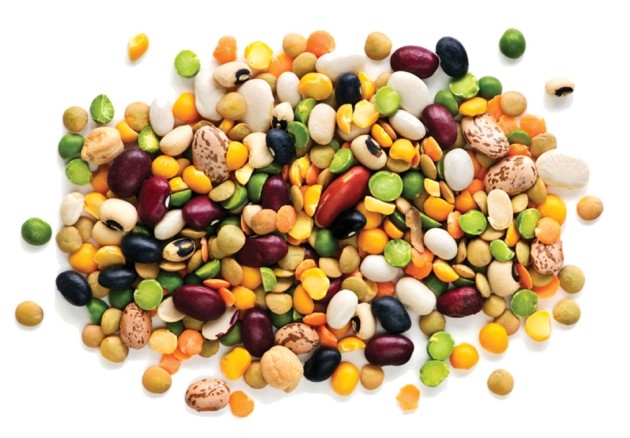
Volleyball’s-Super-Foods
Fab 5 Food #1: Blueberries
Sitting at the top of the super food mountain are blueberries. Blueberries are a great source of nutrient-dense carbohydrates and they contain recovery enhancing vitamin C. Athletes also require adequate minerals and trace minerals to support the enzymes involved in the various energy producing metabolic pathways. Blueberries (especially the skin) contain a broad spectrum of minerals and vitamins to ensure you are efficiently converting the sugar content to energy.
In addition to their strong vitamin and mineral count, the rich antioxidant properties of blueberries aid in reducing oxidative stress during exercise while helping to prevent heart disease and various cancers. Their anthocyanin and flavonoid content helps improve insulin sensitivity while preventing obesity and memory less.
Highlights
Excellent energy source (sugar)
Rich in antioxidants
Fab 5 Food #2: Quinoa
To perform at the highest level, every athlete requires carbohydrates and essential amino acids to fuel and repair muscle tissue. Quinoa contains both high fiber carbs and protein. Quinoa is a plant-based complete protein source, meaning it contains all of the essential amino acids humans cannot produce on their own. This pseudo-grain is also high in minerals and vitamins that will ensure that performance requirements are met. In addition to containing performance enhancing B-vitamins such as folate, quinoa is also loaded with iron and zinc. Zinc has been shown to play an important role in maintaining adequate serum testosterone levels.
Highlights
Excellent energy source (high fiber starch)
Rich in minerals (iron, zinc)
A complete plant-based protein source
Fab 5 Food #3: Wild Salmon
After a grueling training session the body’s requirement for anti-inflammatories increases substantially. Salmon is rich in omega-3 fatty acids, which serve as a powerful anti-inflammatory agent in the body. In addition to reducing joint inflammation and promoting muscle recovery, omega-3 fats have been known to significantly reduce cardiac risk and many cancers.
Salmon also contains high doses of metabolic-boosting B-vitamins such as folate, thiamin, riboflavin, and niacin. Furthermore, this super food also contains high levels of minerals and leucine, a very anabolic amino acid integral to muscle recovery and growth.
Highlights
Excellent protein source
Rich in B-vitamins
Anti-inflammatory omega 3’s
Fab 5 Food #4: Kale
Athletes often forget the importance of nutrient dense vegetables. One glance at the rich green color of kale reveals the array of beneficial minerals and vitamins contained inside each leaf. Kale is commonly known for its high content of vitamin A and vitamin K, important in eyesight and proper blood clot formation, respectively.
Kale also contains a high dose of vitamin C and manganese. Athletes receive substantial benefit from manganese because it serves as a powerful antioxidant inside mitochondria (our energy-producing power houses) and also initiates many enzymatic reactions. Packed with fiber, kale is also a vegetable that is excellent for maintaining optimum cholesterol levels.
Highlights
Powerful antioxidants
High in fiber
Rich in minerals and vitamins
Fab 5 Food #5: Beans
Beans are often an underrated super food, but do not be fooled by their lack of pizazz. These super pods are packed with energy and nutrients to fuel even the most elite athletes. Contrary to popular belief, grains are not the only source of starch an athlete can utilize for energy. For example, black beans, kidney beans, and other legumes are full of fibrous starch that helps regulate insulin while being stored as glycogen for use during a match. Furthermore, the soluble fiber content delays gastric emptying, thus helping reduce cholesterol levels and increase satiety after a meal. Consuming a meal containing a variety of beans will also ensure you capitalize on their high protein content.
In order to harness energy we need enzymes to function properly, and beans contain these metabolic-enhancing minerals and vitamins in addition to their starch and protein.
Highlights
Complex carbohydrate
Soluble fiber
High in protein
Nutrient dense
High Protein Quinoa Salad
(Makes 3 servings)
Ingredients
1 cup quinoa (measure 1 cup dry)
¼ cup black beans
¼ cup kidney beans
½ cup chick peas
1 red pepper, diced
1 cup fresh kale, finely chopped
2/3 cup salsa
Fresh cilantro for garnish
Directions
Pre-cook quinoa the night before and place in fridge to cool.
Mix cooled quinoa with rinsed black beans, kidney beans, and chick peas.
Add the red pepper, kale, and salsa to create a salad.
Garnish with fresh cilantro.
Keep cool and enjoy.
Nutrition facts
(for one serving)
Calories 330.2
Total Fat 4.5 g
Saturated Fat 0.1 g
Polyunsaturated Fat 0.4 g
Monounsaturated Fat 0.1 g
Cholesterol 0.0 mg
Sodium 369.8 mg
Potassium 438.8 mg
Total Carbohydrate 61.5 g
Dietary Fiber 10.2 g
Sugars 4.5 g
Protein 13.3 g